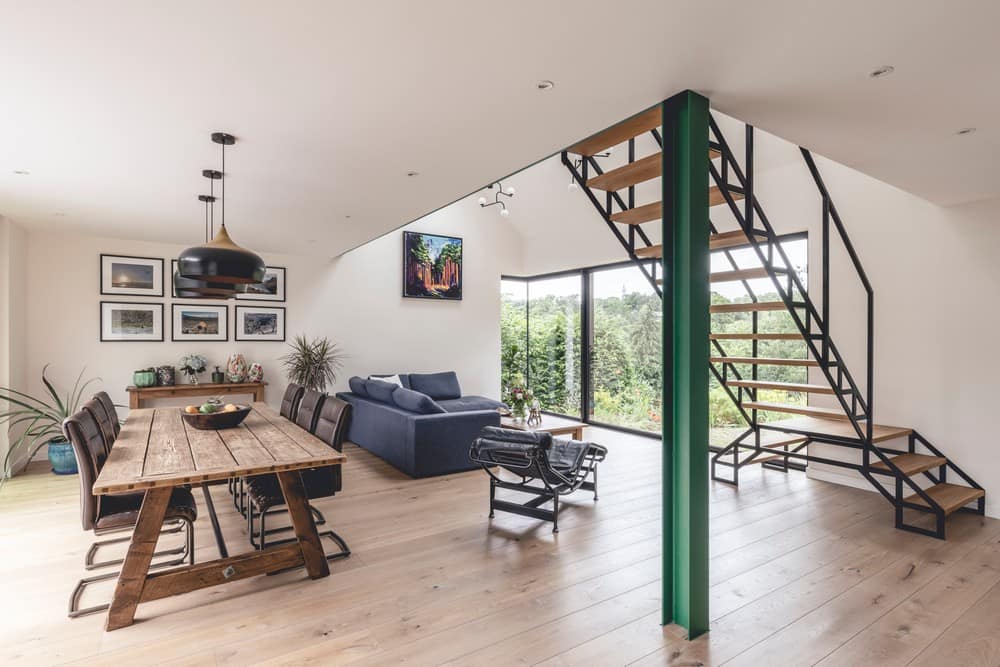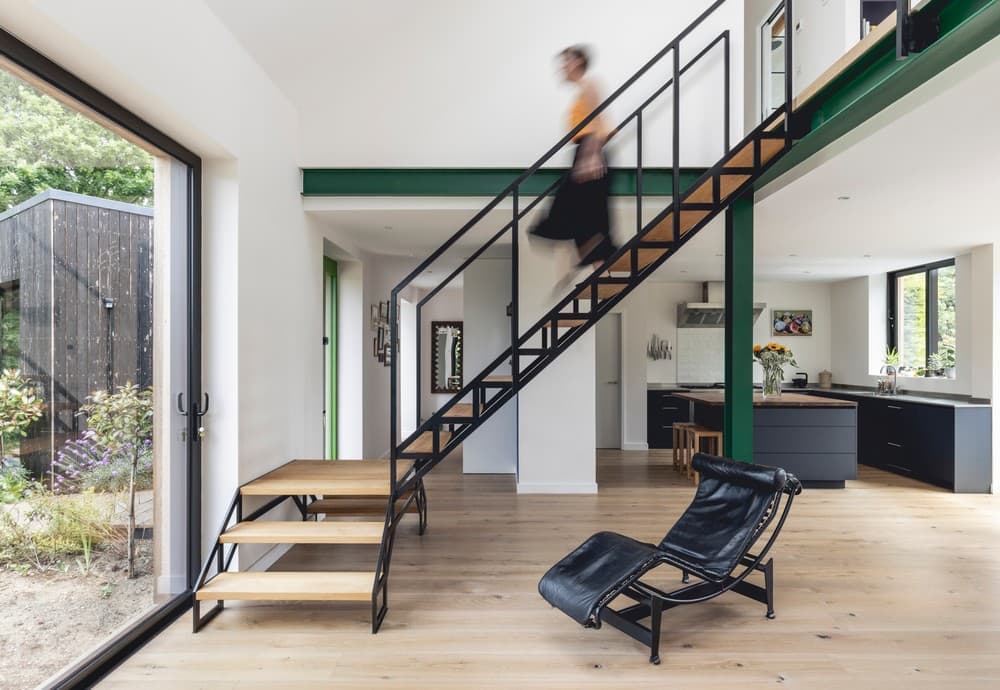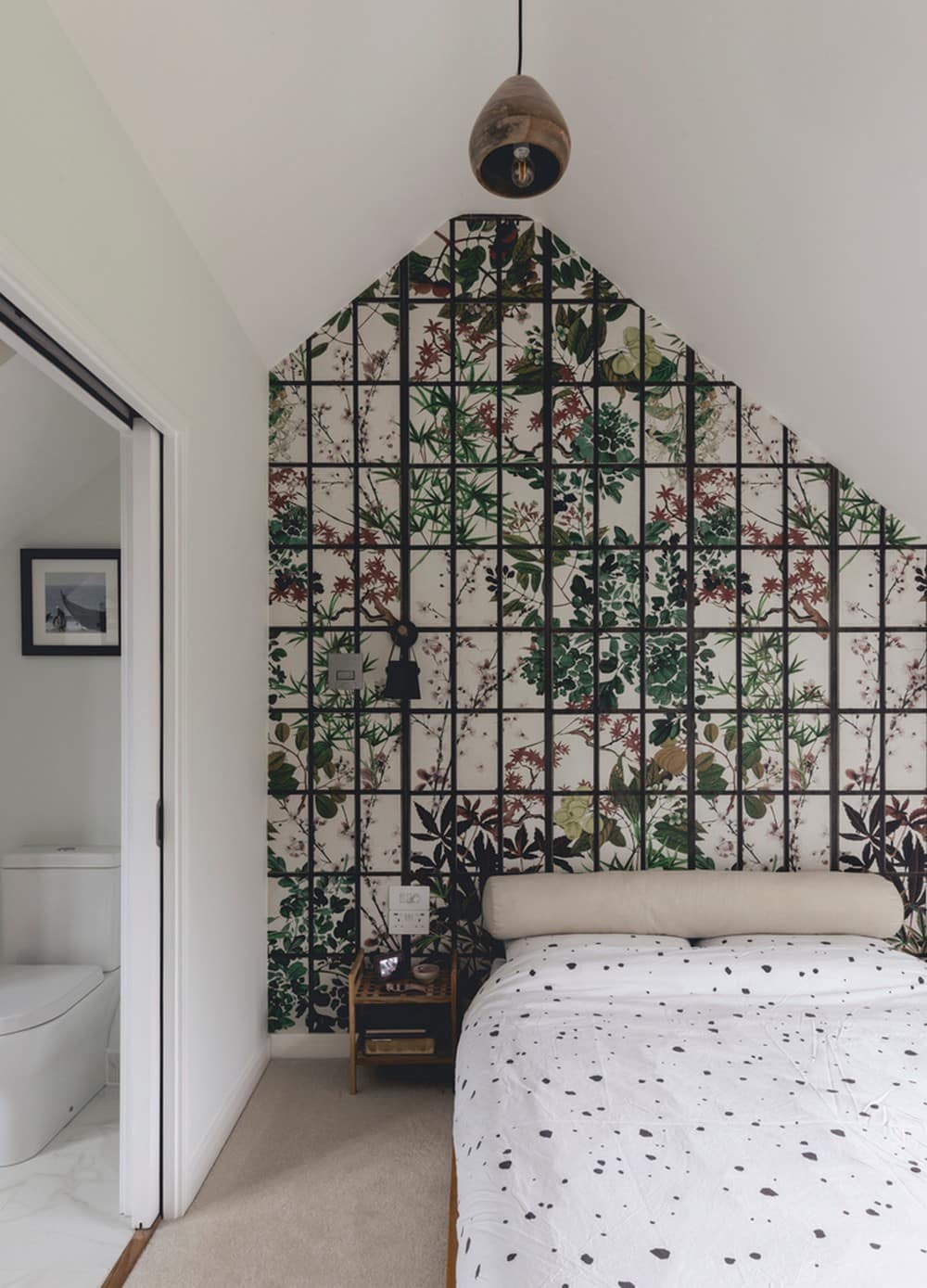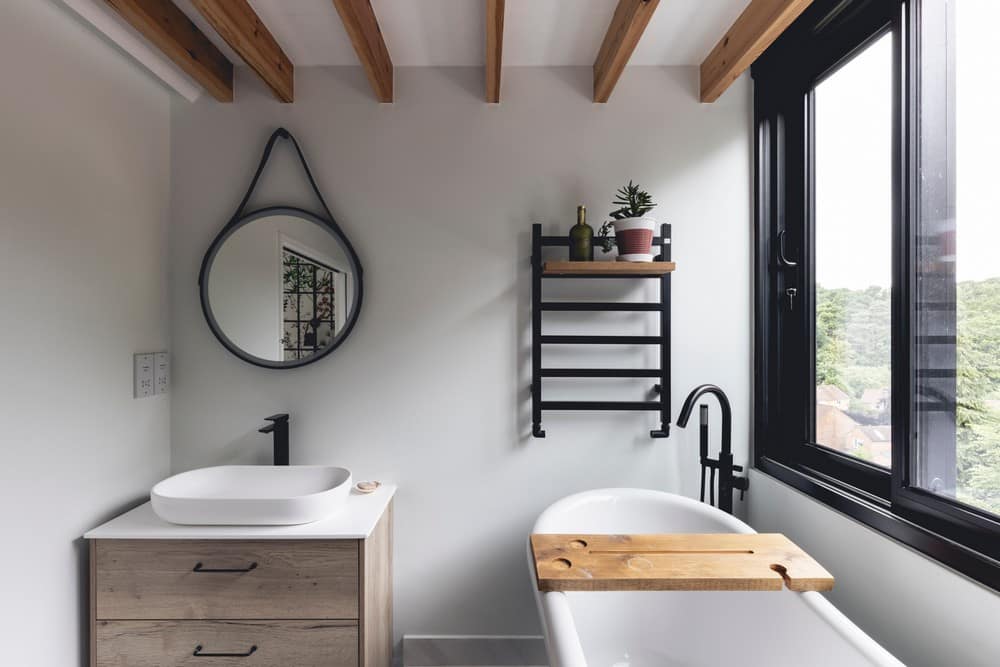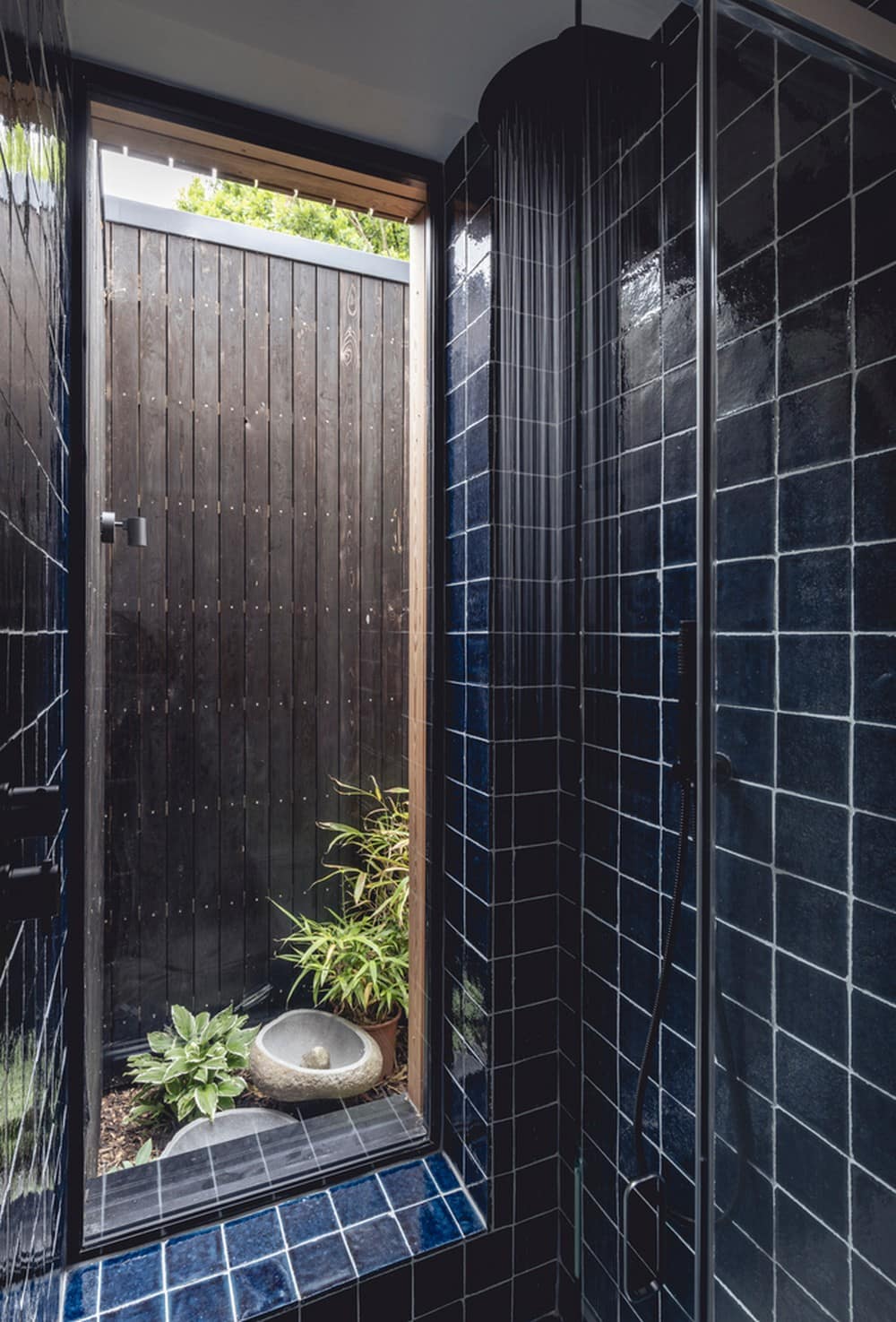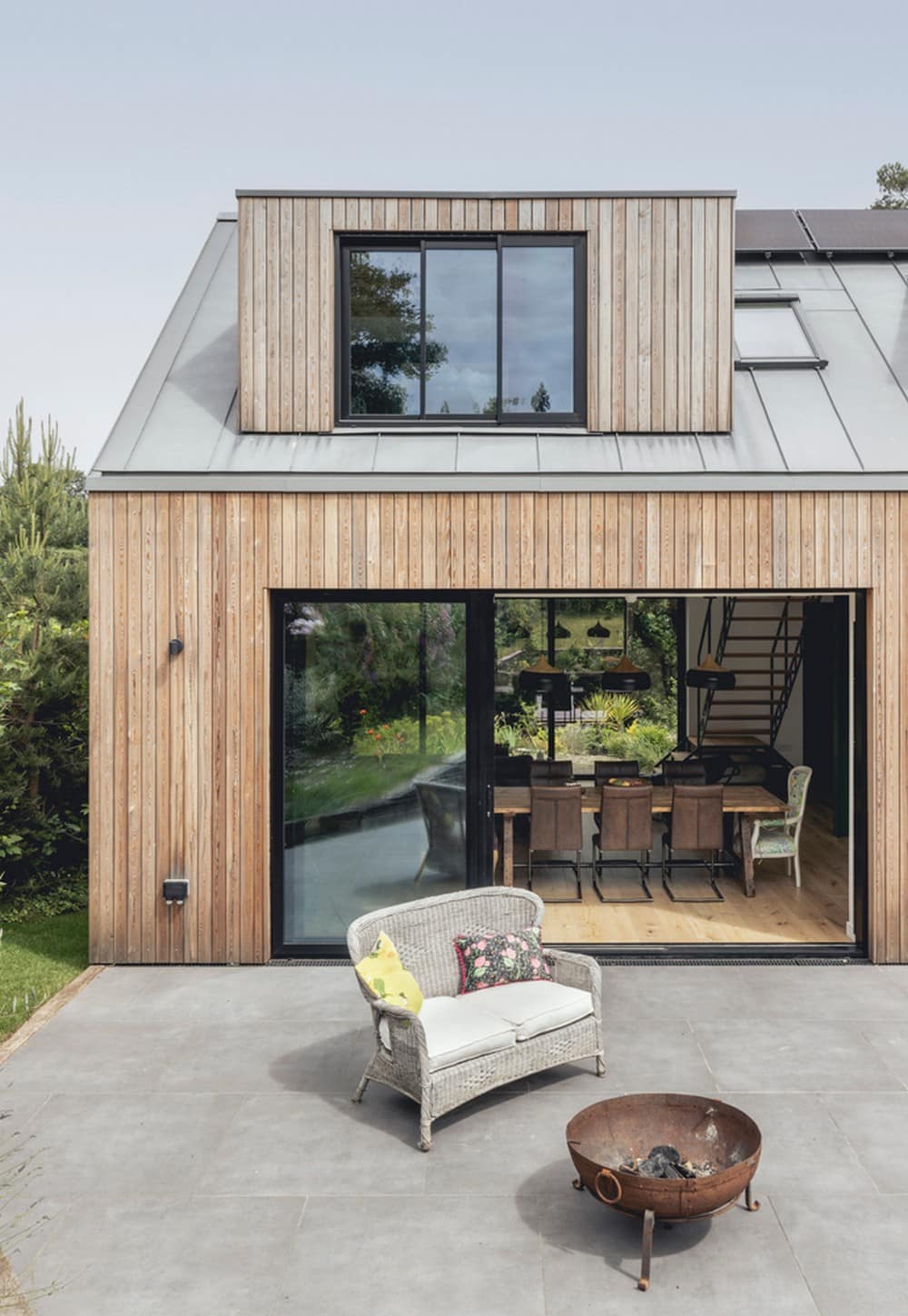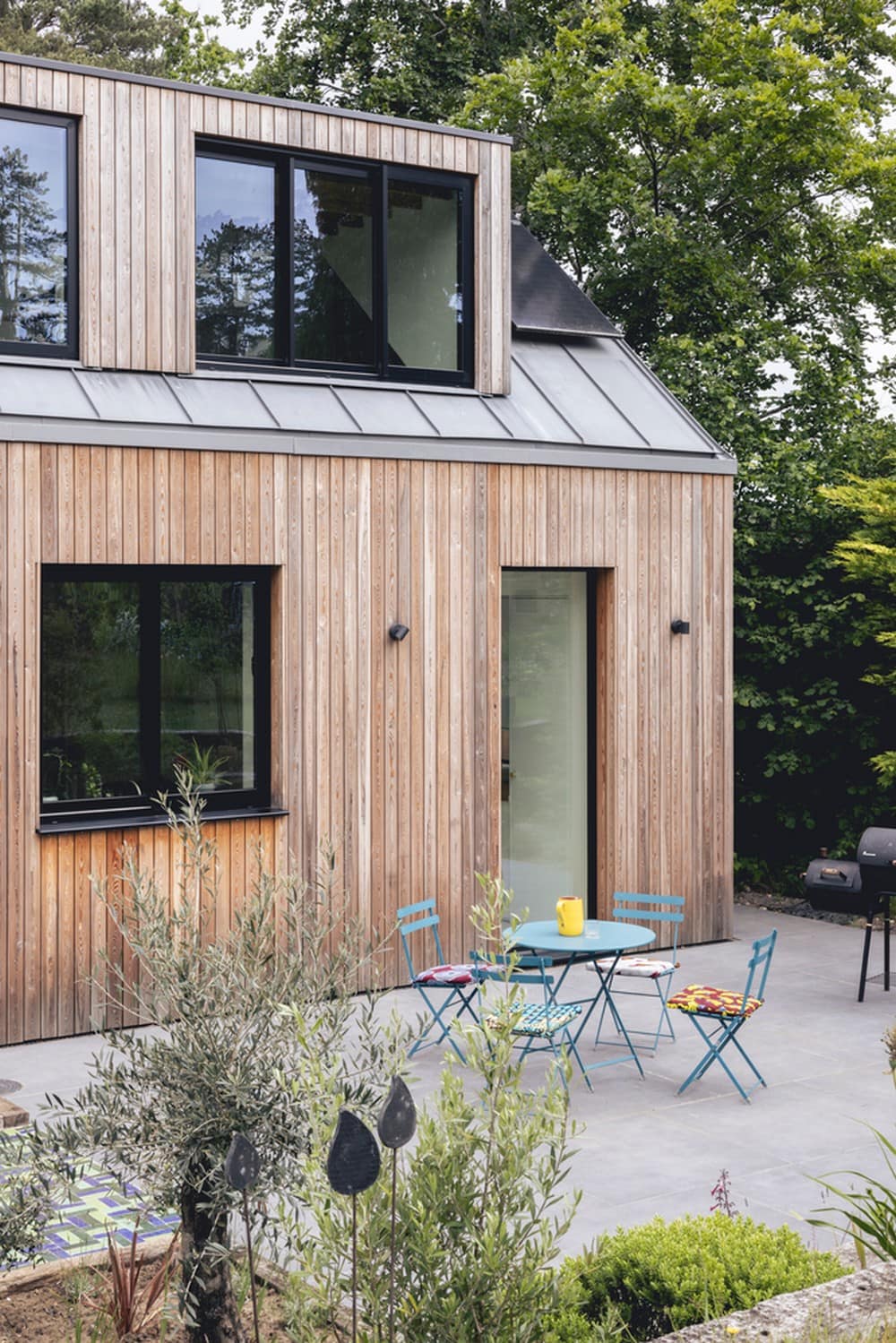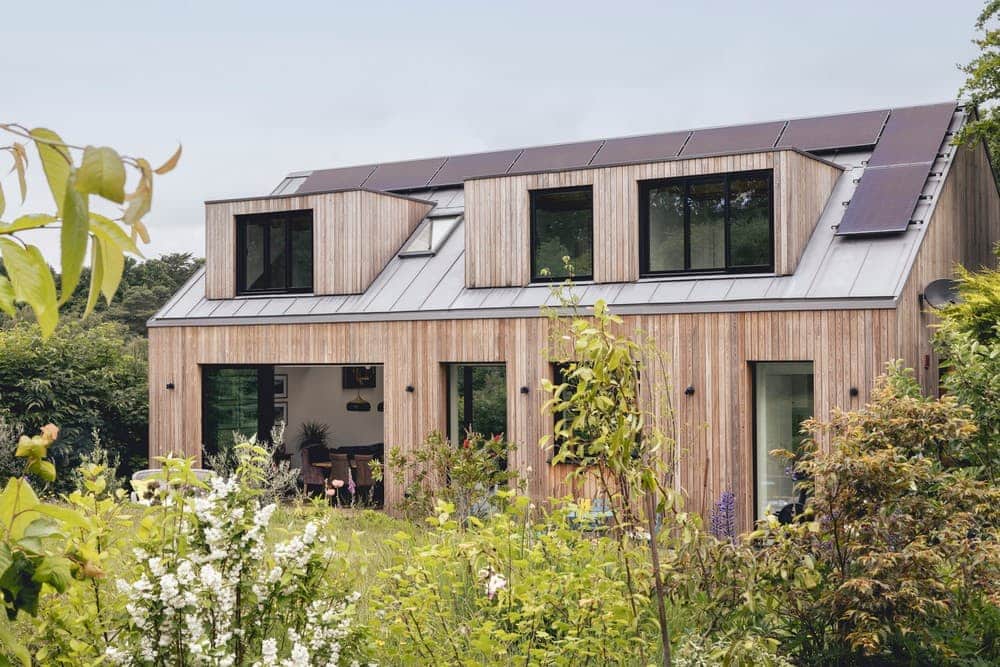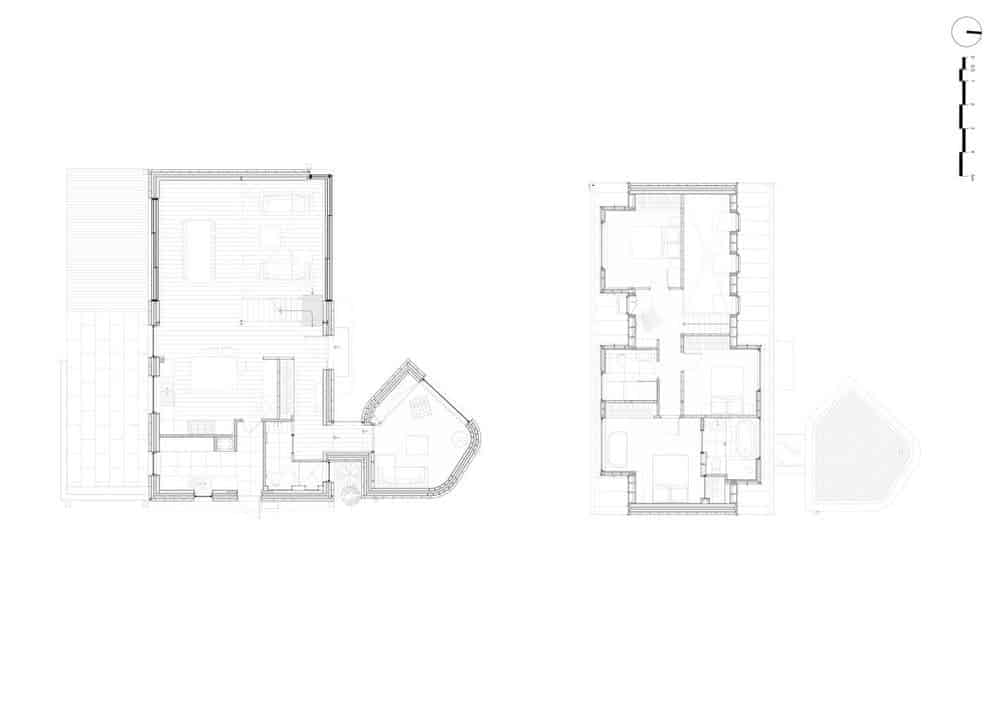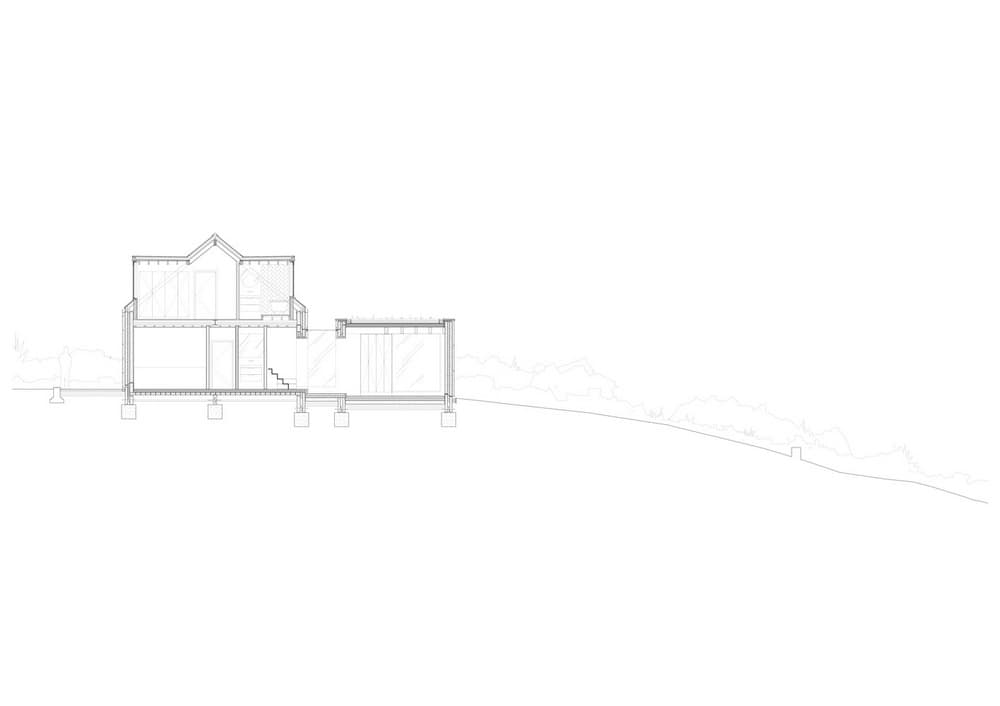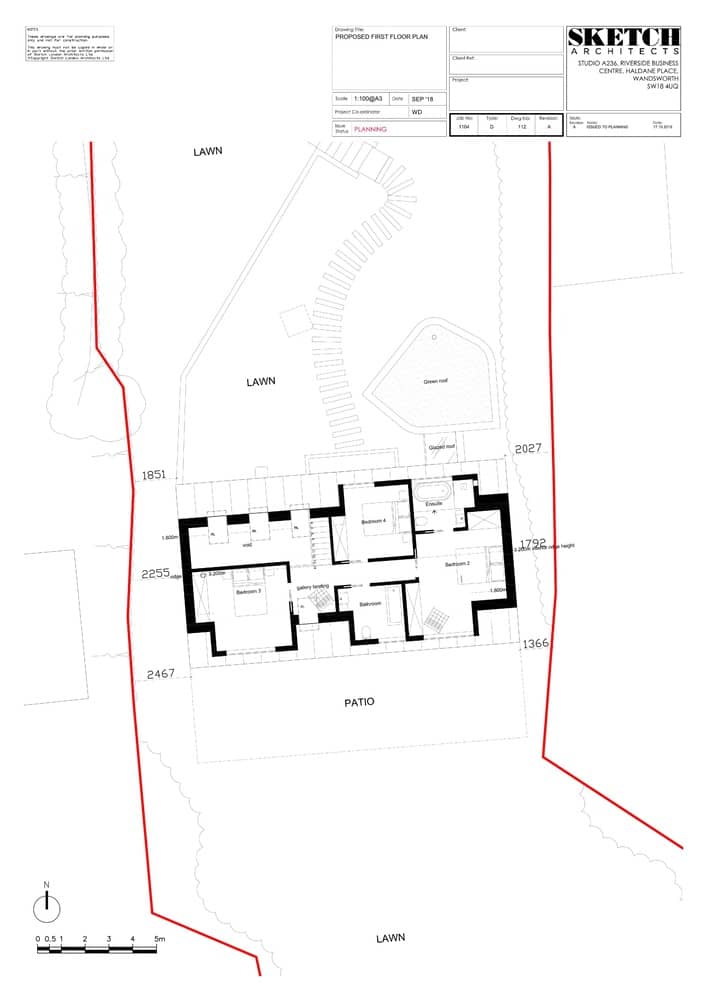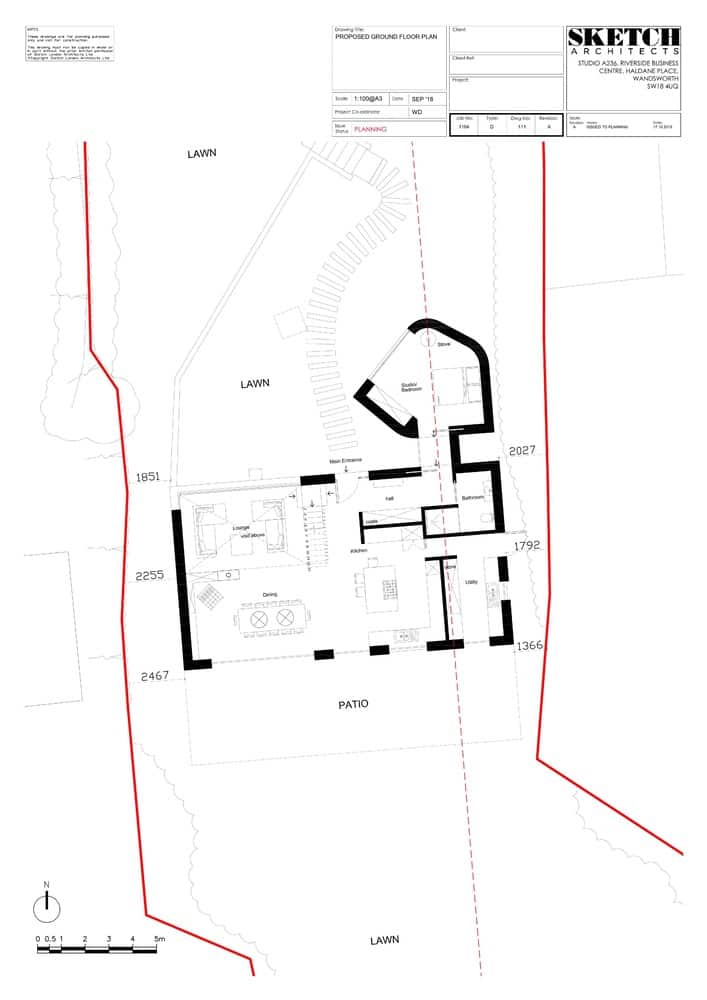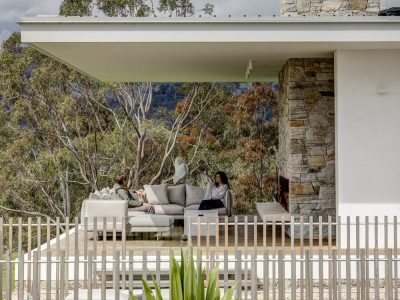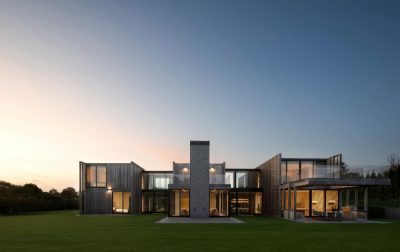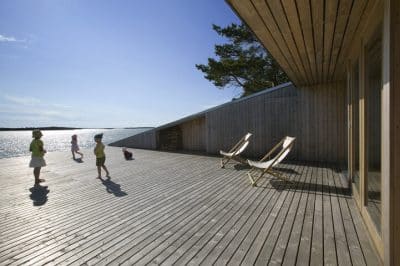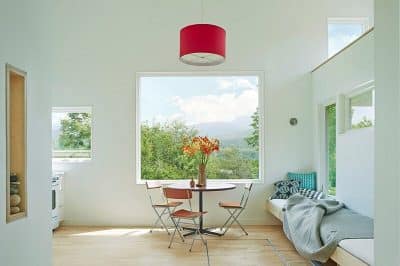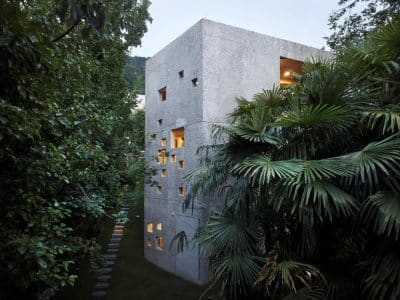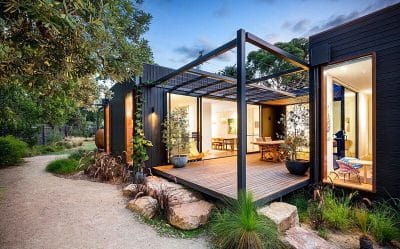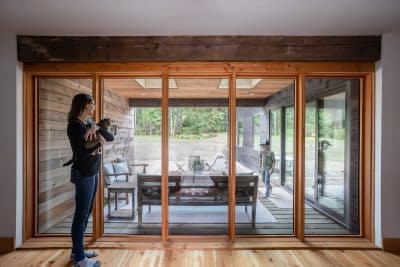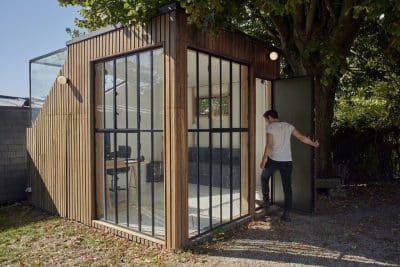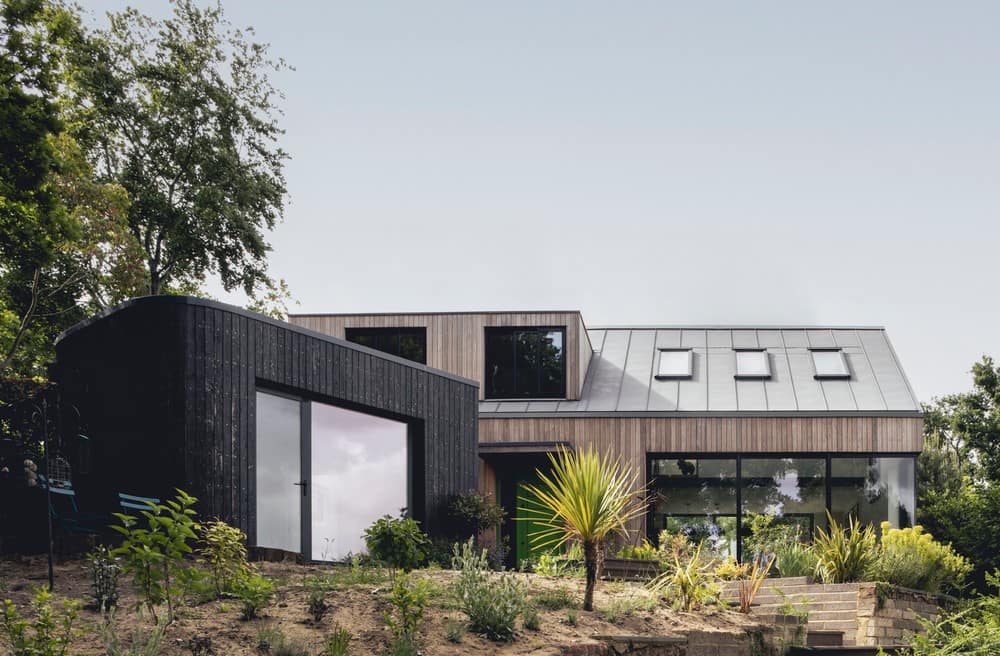
Project: Black Pond Lane
Architects: Sketch Architects
Structural Engineers: Rivergate Consultants Ltd
Contractors: DC Builders
Location: Farnham, United Kingdom
Area: 147 m2
Year: 2021
Photographs: Billy Bolton
Sketch Architects were approached to design a new replacement dwelling on a steeply sloping site in Farnham, Surrey. We initially investigated retaining, in part, the original building but structural examination determined that the existing building fabric was not fit for purpose. The client stated in early discussions that sustainable design was a high priority. They also wanted a building that related to its verdant setting and is finished in natural materials, with glazed openings responding to the elevated views over the Surrey countryside.
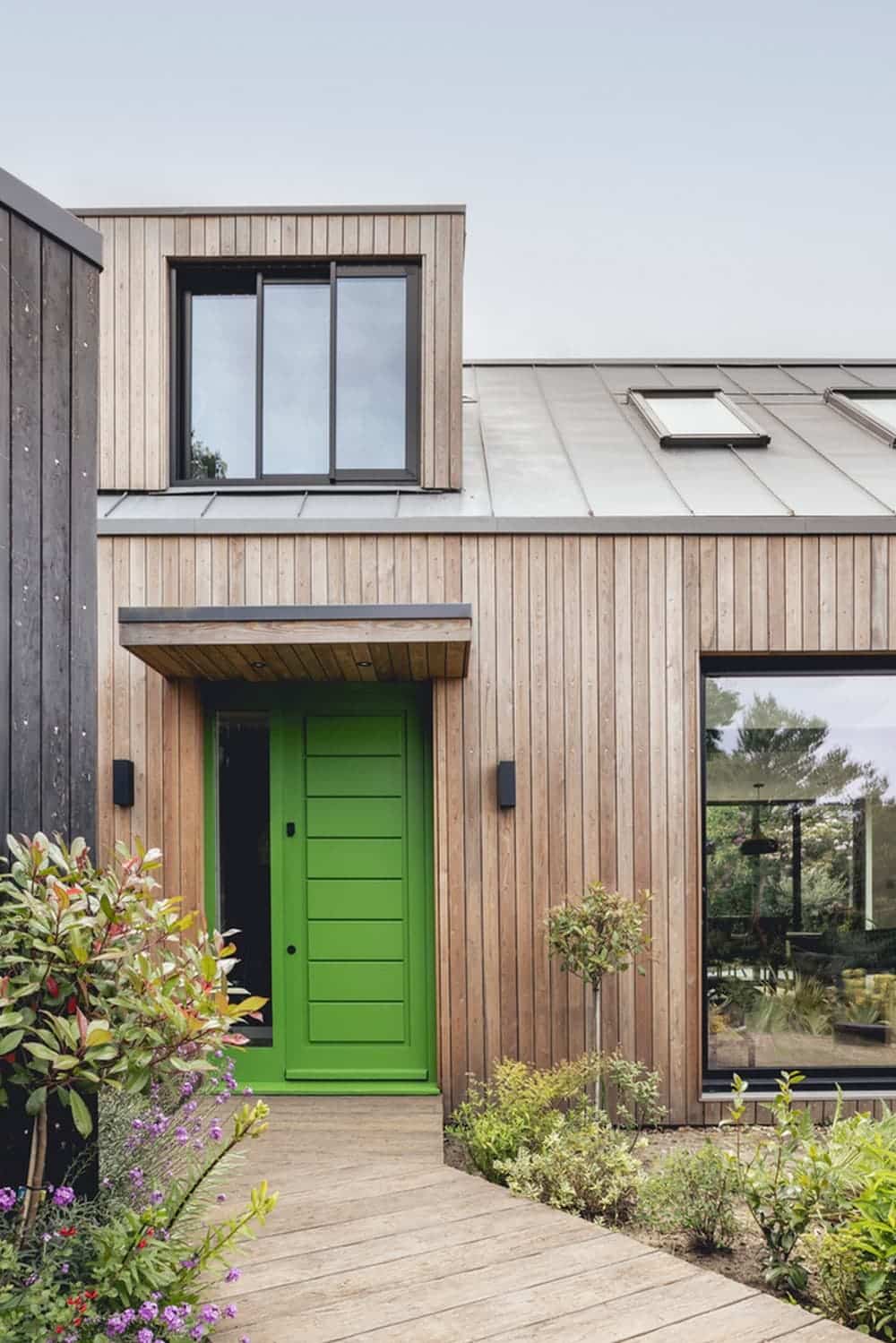
In order to achieve this the building envelope was designed to be super-insulated, with an increased level of air-tightness. On the south-facing façade, PV cells have been positioned on the pitched roof which is linked with other key elements of the building’s mechanical infrastructure including an MVHR system, an Air Source Heat Pump, and a battery for the storage of energy generated on-site. The Black Pond Lane, therefore, is entirely electric, much of it from integrated renewable sources, and uses no natural gas.
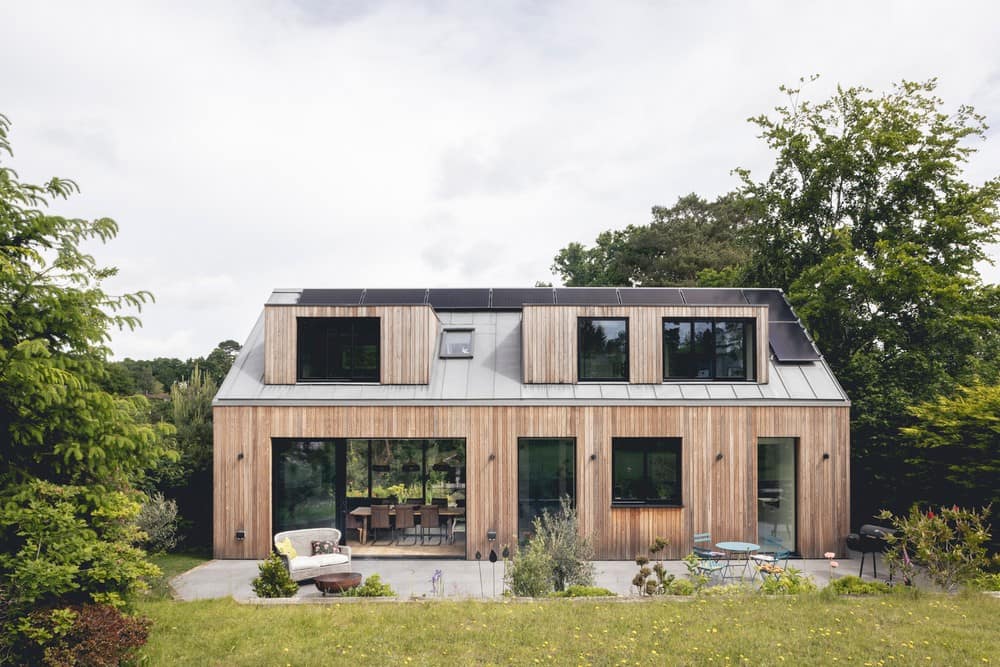
The ground floor of the building predominantly houses the living areas, dining space, and kitchen, all of which are open-plan. This space is punctuated by a bespoke steel and timber staircase that rises up through a double-height space above the living area. Sleeping spaces are positioned on the first floor.
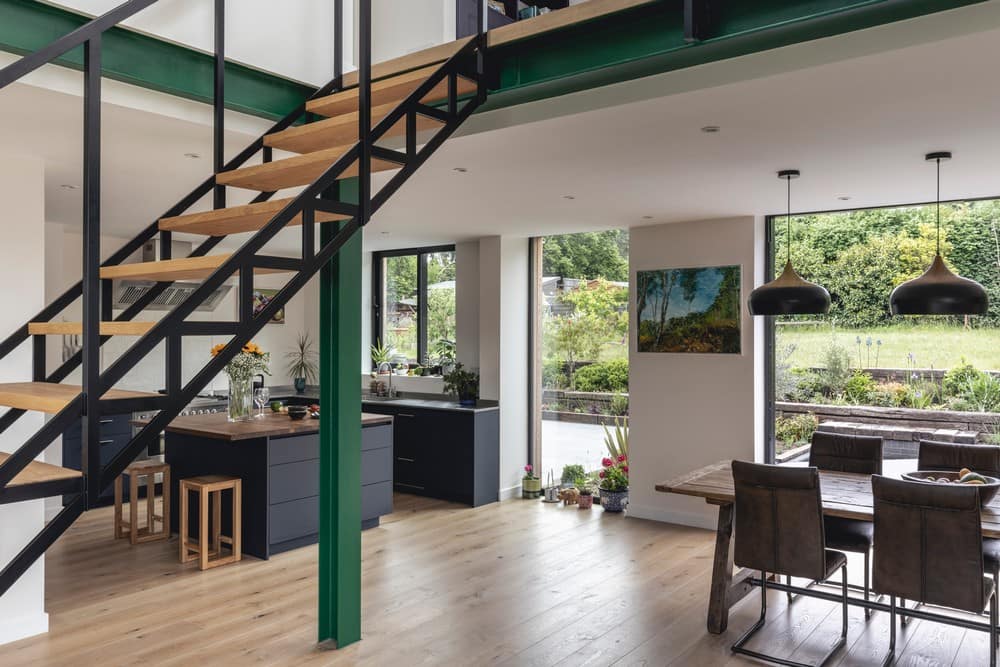
A separate snug room is located in a ‘pod’ structure connected by a glass link and characterized as being clad in charred timber with a sedum roof, which contrasts with the natural larch and zinc standing seam on the main building. Exposed glulam beams are expressed within the ceiling adding an additional layer of detail and texture to this space.
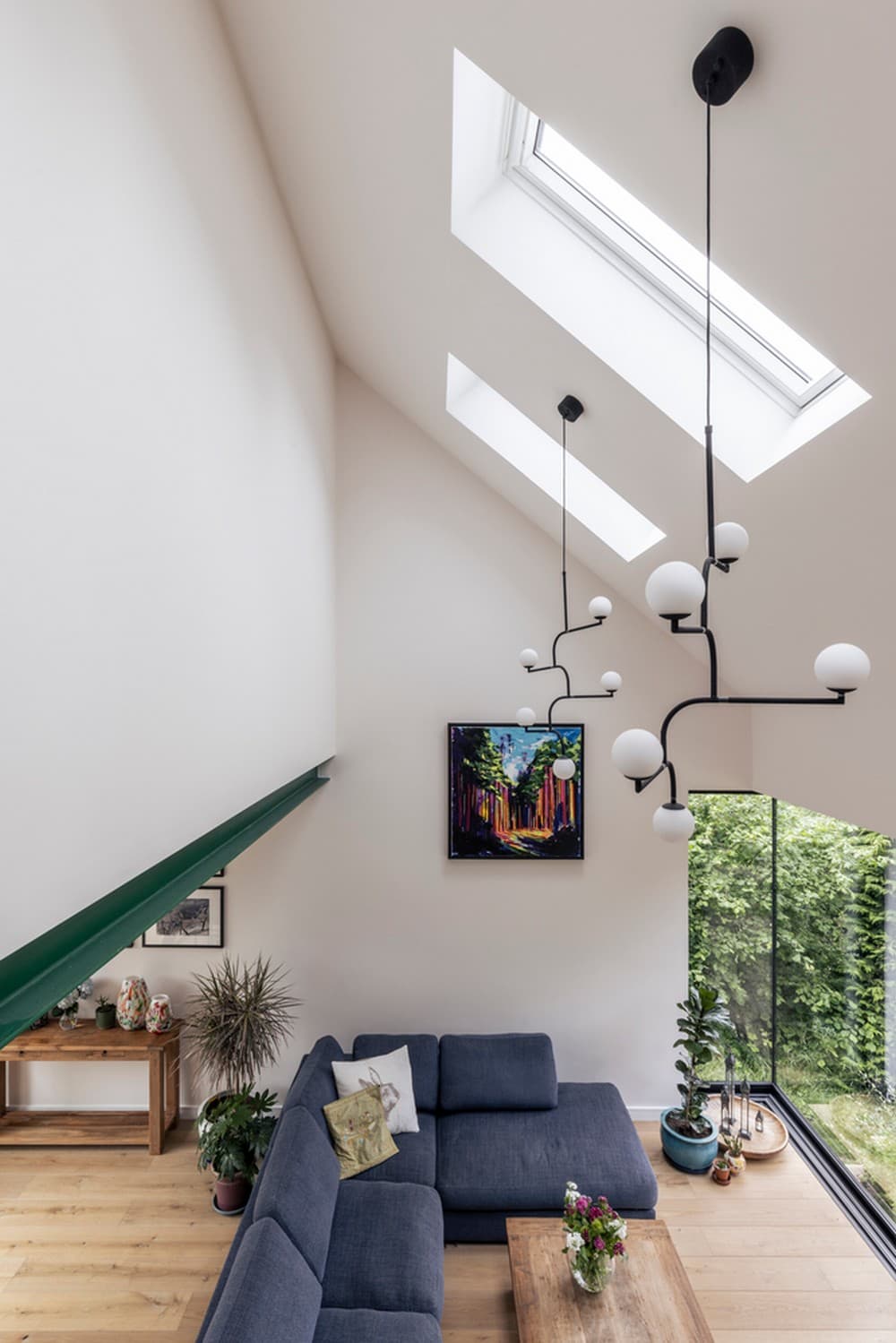
The homeowners were looking to build and live more sustainably – The design of the fabric and making sure it is constructed correctly on site is hugely important, trying to make the building as well insulated and airtight as possible. We used recycled materials where possible and where we needed to use concrete it was cement free. We also installed a mechanical ventilation and heat recovery unit, along with an Airsource heat pump, solar panels, and a battery to reduce the running costs of the building. We have learned a lot from this project and are constantly trying to improve the efficiency of our buildings starting from the insulation, airtightness, minimizing cold bridging, and reducing overheating through solar shading.
